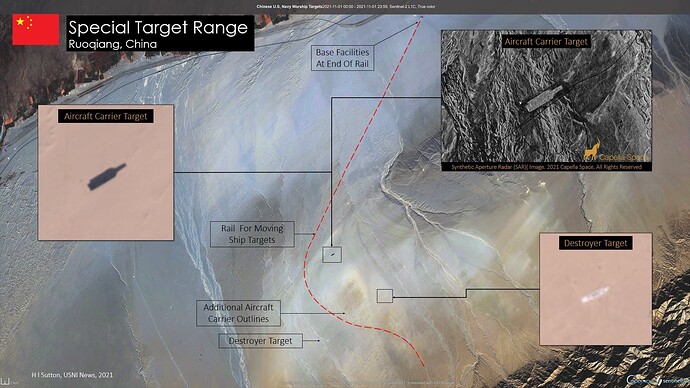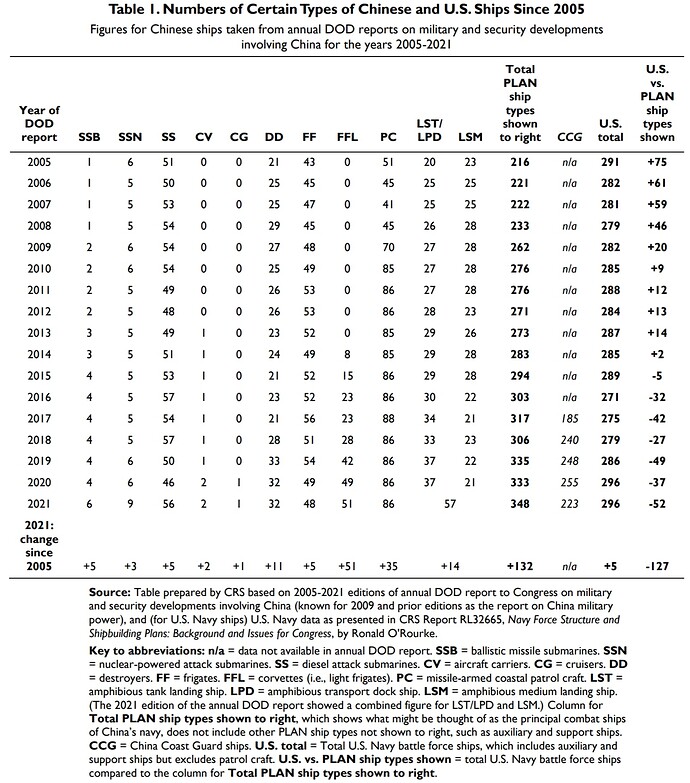It seems that China has been putting some thought into this. For instance, they’ve setup various naval mockups in the Gobi desert in order to presumably improve their ASBM tactics
See this USNI story for more info and analysis.
Of course, it remains to be seen how well these work in practice.
Separately, both the number and range of aircraft carried on a ship these days have decreased from the waning days of the Cold War (source around minute 29:00 in the video) from around 85 aircraft with a 900 nautical mile range to around 62-68 aircraft and a 600 mile range (both figures without refueling)
That cuts both ways … carrier defense in the early 21st century is predicated on being able to mount a so-called outer air defense with new defensive missile and decoy technology. Would it be fair to assume our new tech would surely work, but China’s new tech won’t?
In the Heritage discussion, Jerry Hendrix (LI profile) has a quick summary of what would have to be true for aircraft carriers to remain competitive.
A very expensive mobile force multiplier. @johnwalker quoted USN Ford costing $13B in 2018 dollars. China has been consistently increasing its navy size. Judged in terms of ship count, they surpassed the USN sometime in 2018. Here is a recent CRS summary (source)
And what about the human element aspect. A 2015 study found that in 2011, the unintended pregnancy rate in the US military is higher than in the general population in the 18-44 demographic (source)
The unintended pregnancy rate was 72/1000 women. Married women (odds ratio (OR) 1.30, 95% confidence interval (CI) 1.11-1.54) and enlisted women (OR 2.71, 95% CI 1.99-3.69) had higher odds of reporting unintended pregnancy compared to their counterparts, as did women in the Navy (OR 1.51, 95% CI 1.19-1.91) and Marine Corps (OR 2.38, 95% CI 1.92-2.95) compared to women in the Air Force. Unintended pregnancy rates did not differ between women who were deployed in the previous 12 months and nondeployed women. Additionally, 10% of women who were deployed for 11-12 months in 2011 reported an unintended pregnancy in the previous year, suggesting that their pregnancies occurred during deployment.
Conclusion: Unintended pregnancy is higher in the military, including during deployment, compared to the general U.S. population (52/1000 women). All branches need to address the issue in a comprehensive manner including evidence-based provision of contraception and education among servicemembers.
It could be our military strategists have taken Sun Tzu’s advice to heart : ‘Appear weak when you are strong, and strong when you are weak.’ and ‘If you know the enemy and know yourself, you need not fear’…

